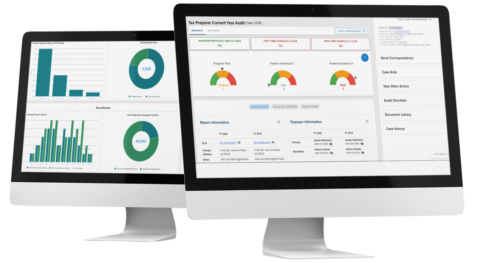Internal Revenue Service Advanced Analytics
Helping the IRS Close the Tax Gap with Advanced Analytics
The Work
 Voyatek’s team of data scientists, engineers and analytics experts have partnered with the IRS on a variety of programs to prevent fraud, increase revenue, and optimize revenue collection. For example:
Voyatek’s team of data scientists, engineers and analytics experts have partnered with the IRS on a variety of programs to prevent fraud, increase revenue, and optimize revenue collection. For example:
- Behavioral analytics and risk profiles help auditors, agents and investigators identify high-value cases and select the best enforcement strategy
- Machine learning and advanced analytics detect and prevent fraudulent returns and identity theft
- Performance monitoring tools measure the effectiveness of enforcement activities and automatically disseminate information to internal and external stakeholders
- Research and survey programs examine how taxpayers interact with the IRS and inform the design of improved taxpayer experience
- Internal program evaluation engagements improve internal operations and support the modernization of the IRS organization
Outcomes
Voyatek has developed risk-scoring models used by the IRS to evaluate more than 100 million tax returns each year. These models are a critical part of IRS’s ongoing efforts to close the tax gap. In addition to increasing revenue protection, Voyatek’s machine learning models alert stakeholders about newly identified schemes, emerging threats, and other fraud that has evaded existing detection methods. Recent outcomes include:
- Prevention of more than $15 billion in fraudulent refund payments
- Development of graph-based neural network models to identify tax returns submitted by organized criminal actors
- A 70% decline in identity theft over the last 5 years, with 95% of observable identify theft prevented
- Rapid deployment of algorithms to detect and prevent the fraudulent release of COVID-19 related benefits


